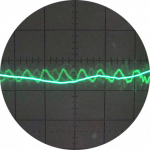A Customer's Lessons Learnt from a Heat Pump Installation in a Large House
I felt it would be helpful to share some lessons about a heat pump installation from a customer's perspective. Ours was completed last week.
My wife and I live in a 5 bedroom house of about 350 square metres spread across two floors. It was built in 1968 and has had several large renovation projects since then. The heat pump installation has gone well, but of course we won't know how well the central heating performs until the winter.
The house has cavity wall insulation, partial under floor insulation and about 70% of the loft is insulated to current standards. We will be completing this in due course. Heat loss calculations were about 15kW, though our gas bills are somewhat lower than this. Admittedly last winter, we did run the gas heating a bit too low and felt chilly!
Here are the lessons learnt:
- Preparation for a heat pump installation involves many time-consuming steps. Therefore, it is much better to plan and do it before your old boiler fails for the last time. This was a motivation for installing our heat pump when the boiler was 10 years old, rather than risking waiting for a few more years.
- It is important to find an installer who follows good design practice and thinks in a similar way to you. I found a couple of installers with experience of large properties, but they had a different mindset and I foresaw potential disagreements. I chose an installer that Mars recommended, which was a good decision.
- Even after months of painstaking research, I still missed some important design considerations - see hot water below.
- In a complex house design, such as a house that has had various extensions at different times, heat loss calculations can be error prone and may give a wide spread of results. An eagle-eyed customer can spot and correct obvious errors. Still, the margin of error is probably quite high.
- Different installers may propose significantly different solutions. In our case, the differences included:
- Number of heat pumps (1 or 2).
- Heat pump manufacturer.
- Number of radiators needing replacing (0-12 out of 33).
- Hot water design (coil in the tank, or plate heat exchanger).
- Hot water cylinder capacity (300-400 litres)
- Whether they usually propose buffer tanks or open loop.
- Method of controlling temperature – room thermostat, weather compensation, a hybrid of the two, or whatever the customer wants.
- When moving from vented (gravity fed) to unvented (mains pressure) hot water, it is important to check whether the mains can provide enough water throughput for the various outlets. Our house has three bathrooms and a shower room. However, my focus was on the central heating and on the water capacity of the hot water tanks. It did not occur to me that the water main in our house might not be powerful enough to match a gravity fed system with three shower pumps. Fortunately, only two of us live in the house for the vast majority of the time, so it is rare to have more than one shower running at a time.
- Heat pumps are much more complicated than boilers:
- They have many modifiable parameters. Fortunately, I have a physics degree and worked in IT for 40 years, so I am curious about that sort of thing and happy to experiment carefully. Other customers might be less comfortable with this.
- The installation manual and user guide may not give any explanation for some parameters, apart from their names.
- Even with lagging, long pipe runs can lose a significant amount of heat. Heat loss is typically quoted in terms of the thermal conductivity of the material, rather than the heat loss per metre of a product with specific dimensions. Calculating the actual heat loss requires quite detailed maths. With more thinking time, I would probably have gone for thicker insulation.
- Some equipment may have a long lead time – e.g. colour-specified Stelrad Vertical Ultra radiators for bathrooms have a lead time of 14 weeks. This means our installers will have to make a return visit and drain the upstairs radiators, but in the meantime we have a fully working system.
- A complex installation can take over a week:
- Hot water can be provided for almost all of the time.
- However, the central heating is unlikely to be available until the end.
- There are pros and cons to the season you choose for your installation:
- Summer has the huge advantage that the house will stay warm. However, you have to wait for months to test the performance of the central heating.
- A winter installation has the advantage that you can test the performance of the central heating immediately after installation. However, you have to endure a freezing house first, unless you can stay somewhere else during the installation. Therefore, we chose summer.
- You need to be confident enough to deal with the concerns of well-meaning relatives and friends, who may warn you that you are making a terrible mistake!
I hope people find this helpful.
Graham
Grant Aerona 290 15.5kW, Grant Smart Controller, 2 x 200l cylinders, hot water plate heat exchanger, Single zone open loop system with TRVs for bedrooms & one sunny living room, Weather compensation with set back by room thermostat based load compensation
Posted by: @grahamfYou need to be confident enough to deal with the concerns of well-meaning relatives and friends, who may warn you that you are making a terrible mistake!
The oil industry sponsored right wing press has, without a doubt, done a fabulous job of convincing people that heat pumps are rubbish, albeith that the industry itself has made a fair contribution to this endeavour.
They tried the same with EVs but appear to have been much less successful and are now even beginning to sound positive about them.
I can resonate with many of your comments based on my own experience. The outcome was successful and the installation in practice straightforward, but finding an installer to quote a sensible price for a system that would do the job proved quite challenging. Ironucally I ended up with someone very local, but got there through a very roundabout route.
When you do get to test please post back about your experience. I trust that you have read about how best to operate them. This is pretty much the polar opposite of how we operate boilers in the UK so you need to forget almost everything you learned about that! Given your physics degree I'm sure you not only have but also understand why!
4kW peak of solar PV since 2011; EV and a 1930s house which has been partially renovated to improve its efficiency. 7kW Vaillant heat pump.
Just to add my observations, exploring a heat pump for a 4 bed house:
1. I was surprised how rigid and inflexible suppliers are about hot water cylinder capacities, with an existing cylinder in an airing cupboard I thought the hot-water side of the installation would be problem free - old cylinder out, equal sized new heat pump cylinder in, what's the problem?
Actually it's a minefield because many installers rigidly follow the MCS set sizing formula, which can result in a much bigger cylinder than your existing one, which may not fit in the existing space, with installers proposing really inconvenient and poor solutions, like moving the cylinder into a bedroom (who wants a cylinder in a bedroom?), or into the garage (losing heat into an unheated space), or knocking through walls to expand the space (lots of mess and cost for a few extra 50L of hot water)
When you tell them you are happy with the existing cylinder size and would much prefer a smaller cylinder which fits into the existing available space, most can't offer anything (I assume because of MCS rules compliance for the BUS grant) and try to convince you why you now need a much larger cylinder.
2. Most installers only offer unvented cylinders (UVC), so where you have an existing vented cylinder with a cold water tank in the attic, even where this arrangement works fine, they will want to rip all of this out and converter to UVC. Despite UVC being more complex, expensive, requiring a drain pipe installing for the pressure relief and needing annual maintenance by a G3 plumber.
@temperature_gradient As far as I am concerned you are pushing at an open door! I realise that the additional internal pipework may need to be increased to equate to the heat emission of a higher running temperature heat source (gas boiler fr’instance) but I think MCS requirements are more a rear covering exercise at the homeowner’s expense.
The above is the reason why I chose a Sunamp Thermino ePV210 heat battery system. We just did not have the space to accommodate a cylinder as fat or high as one with the capacity MCS specify for a 4 bedroom residence. The two of us existed quite happily with a 99 litre tank before and never ran short of hot water! Regards, Toodles.
Toodles, heats his home with cold draughts and cooks food with magnets.
@temperature_gradient I had two installers willing to work with our existing hot water tank, which isn't designed for a Heat Pump, though it is already pressurised. I understand it won't be quite as efficient, but the added cost of heating the water, will probably take over a decade to offset the cost of a new tank, plus the waste of throwing away what is as of now a perfectly good, high quality tank.
Our install should be in the next month, so I'm hoping it all works as expected, but we have been running our gas boiler at 55C flow (dT 11) for heating and hot water for 3 years without issues, so I'm living in hope.
I hope you've opted for weather compensation controls from the start. Strongly recommended both for comfort and cost.
Depending on tariff choices there may be other tweaks.. but focus on WC first... our system has been in 5 years but wasted a lot of time, money with fixed controls for first 2 years
Listed Grade 2 building with large modern extension.
LG Therma V 16kw ASHP
Underfloor heating + Rads
8kw pv solar
3 x 8.2kw GivEnergy batteries
1 x GivEnergy Gen1 hybrid 5.0kw inverter
Manual changeover EPS
MG4 EV
Posted by: @scalextrix@temperature_gradient I had two installers willing to work with our existing hot water tank, which isn't designed for a Heat Pump, though it is already pressurised. I understand it won't be quite as efficient, but the added cost of heating the water, will probably take over a decade to offset the cost of a new tank, plus the waste of throwing away what is as of now a perfectly good, high quality tank
The business of throwing away perfectly good tanks really annoys me. There is a perfectly good solution to a small coil even if you insist on max efficiency, namely to 'plate load' by fitting a plate heat exchanger and circulation pump around the tank.
I found one installer who, even if you are replacing the tank, fits a coil-less tank and this arrangement. Arguably it's a better technical solution anyway.
4kW peak of solar PV since 2011; EV and a 1930s house which has been partially renovated to improve its efficiency. 7kW Vaillant heat pump.
@tim441 thanks, and yes we are going WC for the central heating.
Unfortunately our boiler control only allows us to set a single fixed temperature for heating and hot water. In winter we could heat the house at 50C flow, but to recharge the hot water in a reasonable time needs 55C flow. Obviously to do these experiments required playing with boiler settings a few times a day and isn't sustainable for more than a few days in a row.
Honestly if we could have had WC on our existing boiler we would have gone that way, but it's 19 years old and I couldn't find anyone interested in fitting new controls.
We got lucky and hit gold with our installer. Rather than size radiators to a design temp, we came at it from the opposite direction of lets measure the wall space and fit the largest radiator we can accommodate, and then check it's output at least meets the design temp. Due to a combination of an over-estimated heat loss, and oversized radiators, we are now able to run with flow temps of 30-35C all year which significantly improves our operating efficiency compared to running 50C flow temps in the coldest depths of winter.
The two factors that most affect efficiency, and thus operating costs, are flow temperature and outside ambient temp, and they compound each other to destroy efficiency in winter, requiring higher flow temps just at the very time it is coldest outside. You can't control the outside temps in winter, but you can design to the lowest flow temps possible by fitting the largest emitters possible.
Samsung 12kW gen6 ASHP with 50L volumiser and all new large radiators. 7.2kWp solar (south facing), Tesla PW3 (13.5kW)
Solar generation completely offsets ASHP usage annually. We no longer burn ~1600L of kerosene annually.
@scalextrix which make of heat pump.
We have LG... which seems OK even though controls & data are not the finest...
On WC we heat central heating mostly around 35-40deg in a range 30-45
But it also heats the hot water very rapidly - we target 50deg at night on cheap tariff and top up at lower temps in the day. It heats in under 30 mins even if heavily used.
Listed Grade 2 building with large modern extension.
LG Therma V 16kw ASHP
Underfloor heating + Rads
8kw pv solar
3 x 8.2kw GivEnergy batteries
1 x GivEnergy Gen1 hybrid 5.0kw inverter
Manual changeover EPS
MG4 EV
@jamespa yes, I agree that there are a number of parallels with the reporting on EVs. I am an enthusiastic EV owner and get frustrated by all the negative PR. I use the Intelligent Octopus Go tariff, so the 7p per kWh will come in handy on cold nights.
We are well set up for the heat pump, thanks. The hot water system is working well. It is scheduled to run for 1 hour every night. I have needed to top it up for nearly an hour in the evenings, but that is probably due to a hot water recirculation loop running through uninsulated pipes, which I plan to fix tomorrow.
We have beefed up the radiator capacity significantly, including some very chunky K3s. My installer had a list of radiators to upgrade and I also had my own list. We installed everything that was in either list. We are running an open loop system with just one zone. We have TRVs in the bedrooms and a lounge that gets hot in the sun. I am starting all of them on maximum. I have weather compensation curve set on a frugal level, which I will inch up as necessary. The room thermostat is configured to reduce flow temperature, rather than turn off the system.
All I need now is some bad weather to test it on!
Grant Aerona 290 15.5kW, Grant Smart Controller, 2 x 200l cylinders, hot water plate heat exchanger, Single zone open loop system with TRVs for bedrooms & one sunny living room, Weather compensation with set back by room thermostat based load compensation
@tim441 thanks for the advice. The weather compensation is all set and ready to go.
Grant Aerona 290 15.5kW, Grant Smart Controller, 2 x 200l cylinders, hot water plate heat exchanger, Single zone open loop system with TRVs for bedrooms & one sunny living room, Weather compensation with set back by room thermostat based load compensation
- 26 Forums
- 2,378 Topics
- 53.9 K Posts
- 192 Online
- 6,060 Members
Join Us!
Worth Watching
Latest Posts
-
RE: Grant ASHP 17.5 kw. weather curve
Firstly welcome to the forums. I hope you ar...
By JamesPa , 8 hours ago
-
RE: Solar Power Output – Let’s Compare Generation Figures
@toodles We had a reroof concurrently with the PV in...
By Papahuhu , 9 hours ago
-
RE: Cascade 2x Grant Areona 10kw ASHP - Ongoing setup issues
(Almost) all heat pumps do defrost by taking heat from ...
By JamesPa , 9 hours ago
-

The Great British Heat Pump Owner Persona Survey: Let's Build Our Archetype!
Happy New Year everyone! As we head into 2026, ...
By Mars , 10 hours ago
-
RE: Testing new controls/monitoring for Midea Clone ASHP
Seems to be the only logical explanation. Our ASHP was ...
By benson , 11 hours ago
-
RE: Radiator sizing sanity check
@jamespa thanks, yes it seemed mad to me. An exert f...
By Papahuhu , 12 hours ago
-
RE: Optimum new build house design for Heat Pump
From first principles I would say: Definitel...
By JamesPa , 13 hours ago
-

RE: Weather compensation- why you should use it
As good a place as any to drop this video:/p>
By Mars , 16 hours ago
-
RE: Forum updates, announcements & issues
@transparent D'Oh - I did look before I posted but I mi...
By dr_dongle , 18 hours ago
-
Compatibility with Samsung AE080RXYDEH
I am new to all this. We have a SamsungAE080RXYDEH that...
By John999 , 18 hours ago
-
RE: New Fogstar 15.5kWh upright solution
@batpred Maybe you should buy your additional batter...
By Bash , 19 hours ago
-

RE: Data Accuracy Problem: Daikin 8kW Heat Pump's Onecta App vs MMI Power Consumption
@nursethescreens Yes, comfort and happiness of the fami...
By Toodles , 20 hours ago
-
RE: Connecting Growatt SPH5000 over wired ethernet rather than wireless
Thanks folks. I had tried googling an ethernet lab adap...
By z8lccda , 1 day ago
-
RE: Changing from 4-port buffer to volumizer
@toodles I'm not concerned that the behaviour is not no...
By Andy1618 , 1 day ago
-

-

RE: Setback savings - fact or fiction?
I agree, and I think there are two things in play here....
By cathodeRay , 2 days ago
-
RE: Water Hammer After Heat Pump Install
That's really helpful. Yor last sentence confirms it'...
By JamesPa , 2 days ago
-
RE: Help needed with Grant Aerona 3 issues
First time posting so bear with me. Some bits that have...
By Adamp , 3 days ago
-
RE: Mitsu PUHZ-SW120YHA + EHSC-VM20Uk - Performance
All understood. Obviously its a bit house de...
By JamesPa , 3 days ago





